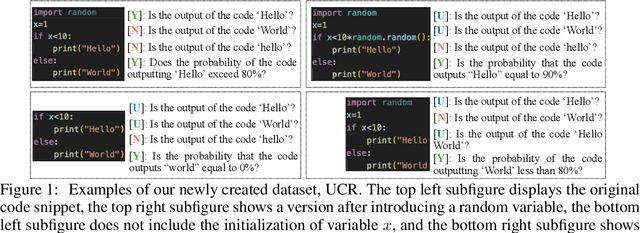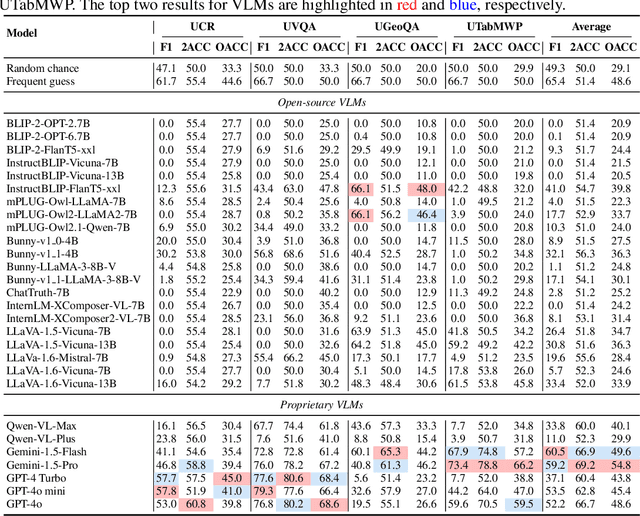TUBench: Benchmarking Large Vision-Language Models on Trustworthiness with Unanswerable Questions
Paper and Code
Oct 05, 2024



Large Vision-Language Models (LVLMs) have achieved remarkable progress on visual perception and linguistic interpretation. Despite their impressive capabilities across various tasks, LVLMs still suffer from the issue of hallucination, which involves generating content that is incorrect or unfaithful to the visual or textual inputs. Traditional benchmarks, such as MME and POPE, evaluate hallucination in LVLMs within the scope of Visual Question Answering (VQA) using answerable questions. However, some questions are unanswerable due to insufficient information in the images, and the performance of LVLMs on such unanswerable questions remains underexplored. To bridge this research gap, we propose TUBench, a benchmark specifically designed to evaluate the reliability of LVLMs using unanswerable questions. TUBench comprises an extensive collection of high-quality, unanswerable questions that are meticulously crafted using ten distinct strategies. To thoroughly evaluate LVLMs, the unanswerable questions in TUBench are based on images from four diverse domains as visual contexts: screenshots of code snippets, natural images, geometry diagrams, and screenshots of statistical tables. These unanswerable questions are tailored to test LVLMs' trustworthiness in code reasoning, commonsense reasoning, geometric reasoning, and mathematical reasoning related to tables, respectively. We conducted a comprehensive quantitative evaluation of 28 leading foundational models on TUBench, with Gemini-1.5-Pro, the top-performing model, achieving an average accuracy of 69.2%, and GPT-4o, the third-ranked model, reaching 66.7% average accuracy, in determining whether questions are answerable. TUBench is available at https://github.com/NLPCode/TUBench.
 Add to Chrome
Add to Chrome Add to Firefox
Add to Firefox Add to Edge
Add to Edge